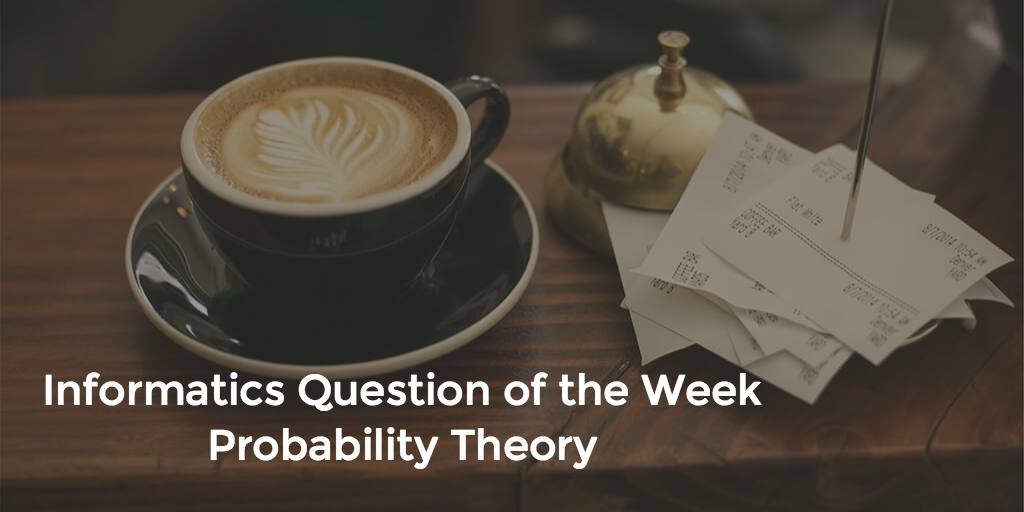Hey there. We’re posting a little bit late this week due to the Holiday week. This week we’ll be reviewing some basic concepts of probability theory.
Let’s say there are two events – A and B. And let’s say A and B are independent then Prob(AandB)=Prob(A)xProb(B).
Example: let’s say the event A is a person of blood group O and the event B is that he or she is diabetic. In such a case, the probability of someone having blood group O and being diabetic is Prob(A)xProb(B).
Now let’s say A and B are mutually exclusive then A and B can’t happen together and P(AorB)=P(A)+P(B).
Example: There are two scenarios, in scenario “A” a person has blood group O, and in scenario “B” he or she has blood group B. In such a case, the A and B scenarios are mutually exclusive since a person must be one or the other, which means the probability that they are either O or B is P(A)+P(B).
Now, P(A|B) is the probability that A happens given that B happens.
Example: If scenario “A” is a person receiving neuropathy and the B event is that he or she is diabetic, then P(A|B) is the probability of receiving neuropathy given that he or she is diabetic.
What we have is the following:
P(A|B)=P(AandB)/(P(B)
If A and B are independent then P(A|B)=P(A)
If A and B are mutually exclusive then P(A|B)=0
Pre-test probability and post-test probability
Pre-test and post-test probabilities are terms that describe subjective probabilities of a probable presence of a certain condition, e.g. a disease, before and after a diagnostic test is carried out, respectively.
The tests can be positive or negative, depending on whether the test comes back as a positive test or a negative test, respectively. The subjectivity of the probabilities lies in the fact that, usually, a person either has the condition or not (the probability always being 100 percent), so pre and post-test probabilities for patients can be regarded as psychological phenomena in the minds of the patients themselves.
When we say ‘test’, we mean any medical test (usually being in the sense of diagnostic tests), and also even assumptions (for example, assuming that the tested person is a female or male).
Multiplication Rule
No matter what two events A and B are, the joint probability of A and B, which basically is the probability of both A and B events occurring at the same time, is equal to the outcome of the probability of A given B times the probability of B:
P(AandB)=P(A|B)P(B)
It is also called the multiplication rule of probabilities.
Let’s say event A happens when the exercise test is positive and event B happens when angiography is positive. The probability of having a positive exercise test and a positive coronary artery disease at the same time is thus P(T+ and D+).
But according to the multiplication rule: P(T+and D+)=P(T+|D+)P(D+).
P(T+|D+)=0.80 means the sensitivity of the test, while P(D+)=0.70 is the prevalence of coronary disease and so P(T+and D+)=0.80×0.70=0.56, as before.
Question
What is the difference between pre- and post- tests?
A) The difference is in the complexity of the tests
B) One test is carried out before the event, while the other one is carried out to check the prediction
C) Both of them are variables in the Bayes’ Theorem
D) Pre-test is the outcome of the Bayes’ Theorem, while the post-test is the outcome of the multiplication rule of probabilities
Answer and Explanation
The correct answer is B) – we predict things based on the probability theory of a certain event. Then, after the event has taken place, we check whether the prediction was correct or not.
